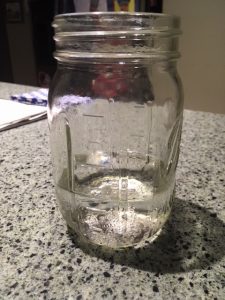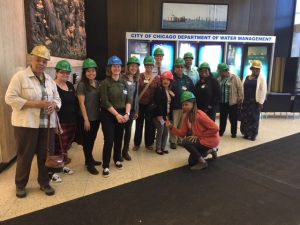Drinking Water Takes Center Stage – Help Us Review Toolkit
Ever heard of GenX – and, not the post-baby boom generation Gen X – but the chemical contaminant? Neither had I really – until sometime in the last year or so when it was discovered in the drinking water supply of sev eral communities in North Carolina, the state where I live. The chemical was found at elevated levels in the Cape Fear River, which is the drinking water supply for places like Wilmington, NC, due to discharges from the upstream Chemours plant.
eral communities in North Carolina, the state where I live. The chemical was found at elevated levels in the Cape Fear River, which is the drinking water supply for places like Wilmington, NC, due to discharges from the upstream Chemours plant.
GenX is a byproduct of industrial manufacturing and is part of a group of chemicals called Per-and polyfluoroalkyl substances (PFAS), which don’t break down and can accumulate in our bodies and the environment. These were created as alternatives to other bad chemicals, but it turns out they are harmful too. After trying to suppress a new scientific study about the health impacts of PFAS, the Trump Administration relented to public outcry and released the report that shows that PFAS pose health risks at lower levels than are currently advised.
Now what? It turns out that PFAS are “unregulated” under the country’s main drinking water law, the Safe Drinking Water Act, meaning drinking water treatment plants aren’t designed to filter and treat them. PFAS and many other chemicals that can cause harm are somewhere on the long list of unregulated contaminants that are being monitored or awaiting study. This leaves people wondering what to do protect themselves and their families and concerned about what else might be in their water.

River Network and Groundwork USA’s Drinking Water Peer Learning Cohort visiting the Jardine Water Treatment Plant, Chicago (photo: K Baer)
And, this is just one concern out of many when it comes to achieving safe, clean, and affordable drinking water. From GenX here in North Carolina to harmful algae outbreaks in Lake Erie to lead contamination in many communities, making our drinking water safe and affordable is an issue we must address – but a really confusing one that can feel overwhelming.
For this reason, River Network, with the assistance of an advisory committee, is creating a Drinking Water Guide, or Toolkit, as a resource for watershed and community groups starting to work on this important issue. Over the summer we will have a series of focus-group calls to introduce different sections of the toolkit and get your feedback on how this guide can be most helpful. If you’d like to participate or otherwise help us in this review process, please contact me here. We need your input!




